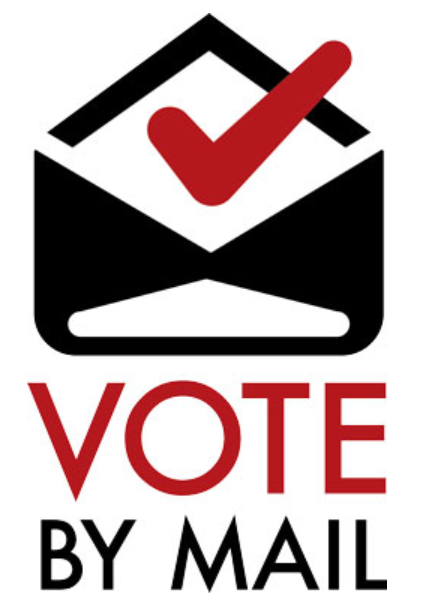Political Mail vs. Election Mail: Why 2020 Is The Year to Pay Attention to these Terms

Carolyn Angelini
Director of Resource and Postal AffairsEach year more and more Americans count on the Postal Service to cast their votes, and in light of the COVID-19 pandemic many are curious of the options. Even amongst the pandemic the Postal Service and mailers across the country are preparing for the November 2020 general election which will include numerous congressional, state and local races in addition to the Presidential election. Mail is an increasingly important part of the elections and as Americans are practicing social distancing the topic of voting by mail is getting even more attention than it has in the past. We thought we’d take a moment to break down some of the basics around Political and Election mail.
What is Political Mail?
The category of Political Mail can include both Political Campaign Mail and Political Message Mail both of which can be mailed as either First Class or Marketing Mail.
- Political Campaign Mail is the term used to describe mail promoting the campaign of a registered candidate, a campaign committee (federal, state or local) or a committee of a political party (an example would be the Democratic National Committee).
- Political Message Mail is mail sent by a political action committee (PAC), super-PAC, or other organization engaging in campaign activity, issue advocacy, or voter mobilization.
What is Election Mail?
According to the 2018 Election Administration and Voting Survey, a quarter of the 120 million Americans that cast a ballot in that year’s general election voted by mail. Election Mail is any item mailed to or from authorized election officials that enable citizens to vote, such as:
- Ballot materials
- Voter registration cards
- Absentee applications
- Polling place notifications
You should be able to notice the Postal Service provided Official Election Mail logo on the outside of these mail pieces:
Alternative Ways to Vote
Absentee Ballots – An absentee ballot is the printed ballot marked by an absent voter, sealed in a special envelope, and returned to election officials either in person or through the mail.
Absentee and Early Voting – Most states offer a method for eligible voters to cast ballots before Election Day, either during the early voting period or by requesting an absentee ballot. In 11 states, early voting is not available and in 17 states a reason is required to request an absentee ballot.
Your state may offer these three ways for voters to cast ballots before Election Day:
- Early Voting – In 39 states and the District of Columbia, any qualified voter can cast a ballot in person before Election Day without an excuse or justification.
- Absentee Voting – All states will mail an absentee ballot to qualified voters if they request one. The voter can then return the ballot in person or by mail. There are 17 states that require a reason to vote by this method while 33 states plus the District of Columbia allow anyone to without requiring justification. Some states offer a permanent absentee ballot list where once a voter asks to be added to the list, s/he will automatically receive an absentee ballot for all future elections. In addition, the Postal service provides men and women serving abroad in the military with opportunities to vote through APO/FPO/DPO Absentee Ballots.
- Mail Voting – There are five states (Colorado, Hawaii, Oregon, Washington and Utah) that are “All-Mail” Election states. California, Nebraska and North Dakota permit counties to determine if they will conduct All-Mail elections or not. Several other states permit some elections by mail based on their preference or population of the jurisdiction area. In these states/areas’ ballots are automatically mailed to every eligible voter without voters having to request to receive them. At least 21 other states have laws that allow certain smaller elections, such as school board elections, to be conducted by mail. The process looks like this; all registered voters receive a ballot in the mail, the voter marks the ballot, puts it in a secrecy envelope or sleeve and then into a separate mailing envelope, signs an affidavit on the exterior of the mailing envelope, and returns the package via mail or by dropping it off in person. Ballots are mailed in advance of Election Day so voters have an “election period” rather than a single day to vote. All-Mail elections are often referred to as Vote-By-Mail elections and are essentially absentee voting for all. Some All-Mail Election states still allow voters the option to come to the polling sites to cast their ballots on Election Day.
Evolution of These Phrases
As we just explained, a ballot that has been sent to a voters home and allows them to cast their vote outside of a formal polling place has traditionally been referred to as an “absentee ballot” and the person who votes is called an “absentee voter.” The term was used when the assumption was that voters would be “absent” from their neighborhood polling place on Election Day. Over time as more voters ask for these alternative methods and as states began offering voters different solutions, various terms have become popular; “advance ballots,” “mailed ballots,” “by-mail ballots,” “mail ballots” or “vote-by-mail ballots”, and while regulations may differ it’s still the same thing.
How Americans vote has evolved over the past 250 years and with the coronavirus pandemic already impacting primary elections, some election officials are considering increasing vote by mail options for the general election. Tricky thing is the All-Mail states have tested and rolled out this option over an extended period of time, first in only certain circumstances and then adding opportunities as voters and jurisdictions become more familiar with it. This brings us to the pros and cons of the Vote by Mail topic in this election year.
Advantages of Greater Vote by Mail Options
- Voter convenience and experience. Citizens can review their ballots at home and take time to study the issues and options.
- Financial savings—Jurisdictions may save money because they no longer need to staff traditional polling places with poll workers and equip each polling place with voting machines.
- Turnout – Some believe that the convenience will increase voter turnout.
Possible Disadvantages of Vote by Mail
- Some say the tradition of voting with your neighbors at a local school or church is part of the American experience.
- Some areas such as Native American reservations that don’t have street addresses and use shared P.O. Boxes might have issues voting by mail.
- Some feel there isn’t enough security and that coercion is a concern.
- All-Mail elections slow down the counting process, especially in states that allow ballots postmarked by Election Day as these votes might not be counted for a week or more after they are cast.
What Can You Do? Know Your State!
Recently both Pennsylvania and Wisconsin expanded Vote by Mail options ahead of the November elections citing that Americans should feel safe casting their ballots in light of current social distancing practices. And why not? Voting by Mail isn’t a new concept – even Union soldiers were able to cast absentee votes in the 1864 Presidential election and we support voting by mail for thousands of our military even today.
Key Takeaway: Know your state and local jurisdictions’ requirements for submission and pay attention as it gets closer to elections to stay on top of any changes. Voters who plan on using a method other than in person voting on the actual election day should understand your state and local election officials’ deadlines, especially as its related to postmarks. The Postal Service recommends voters mail their ballots at least a week before the due date to account for weather or unforeseen events.
About the Author









